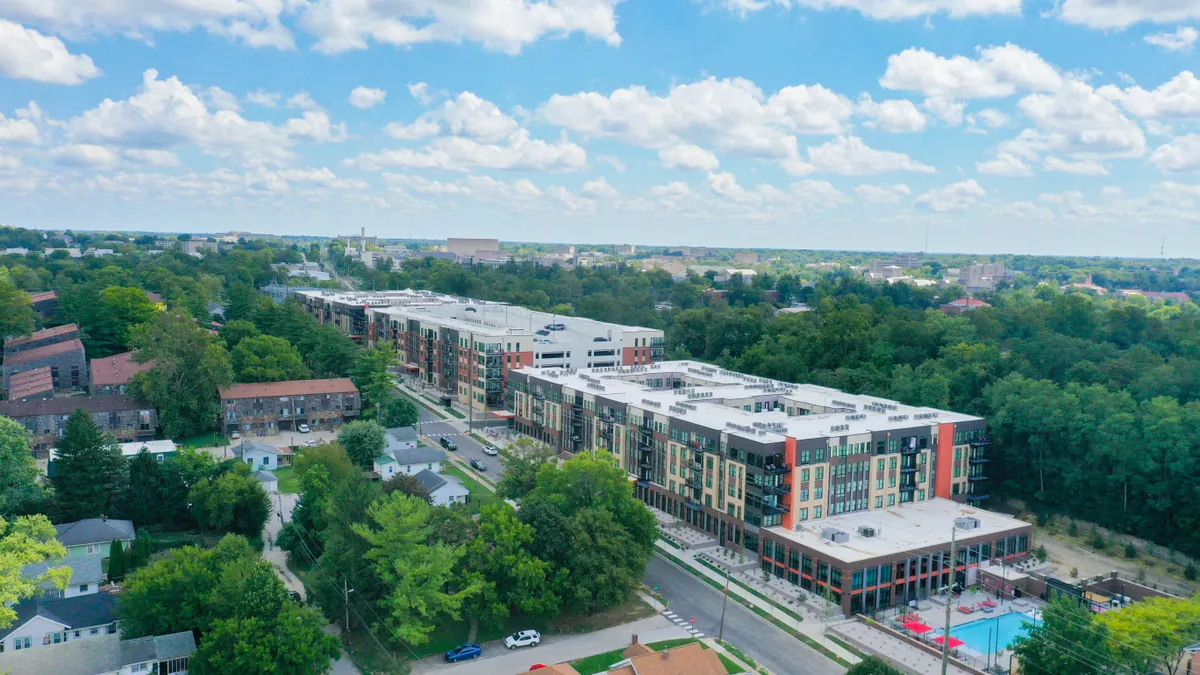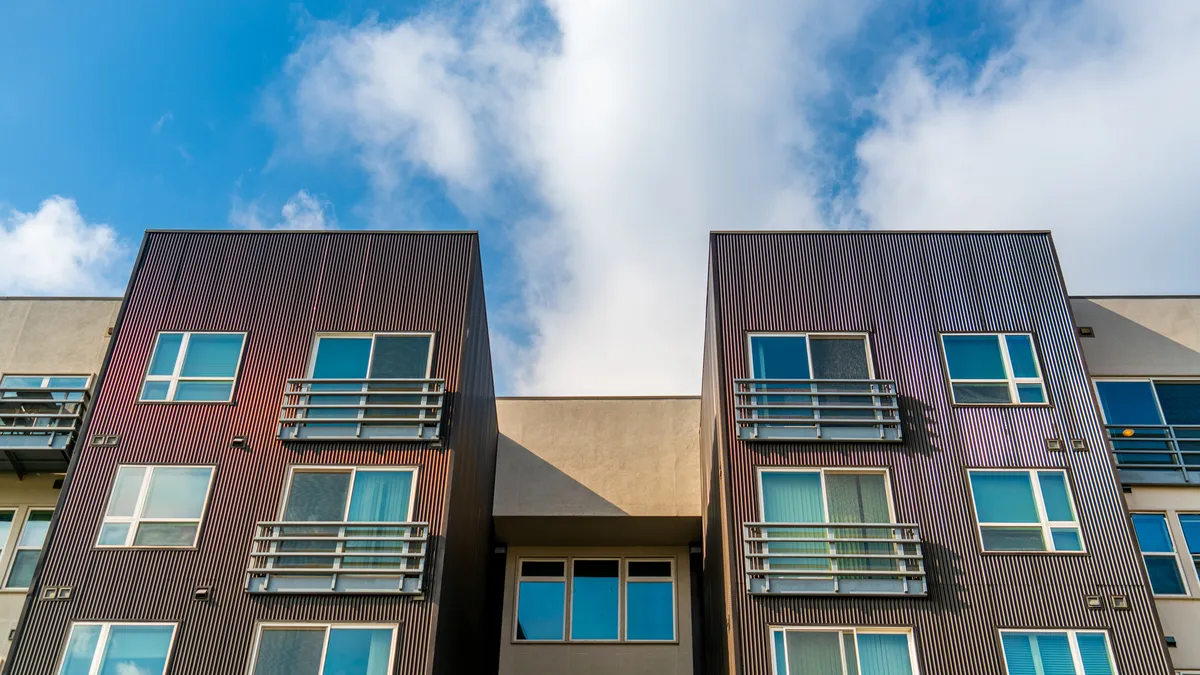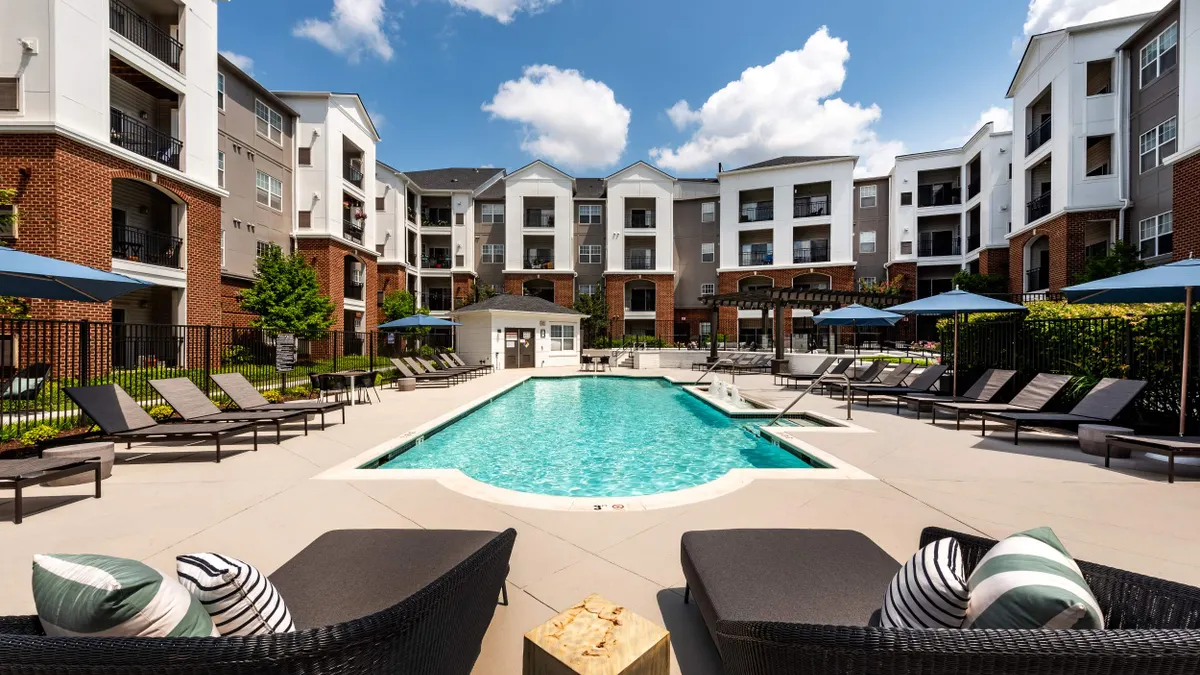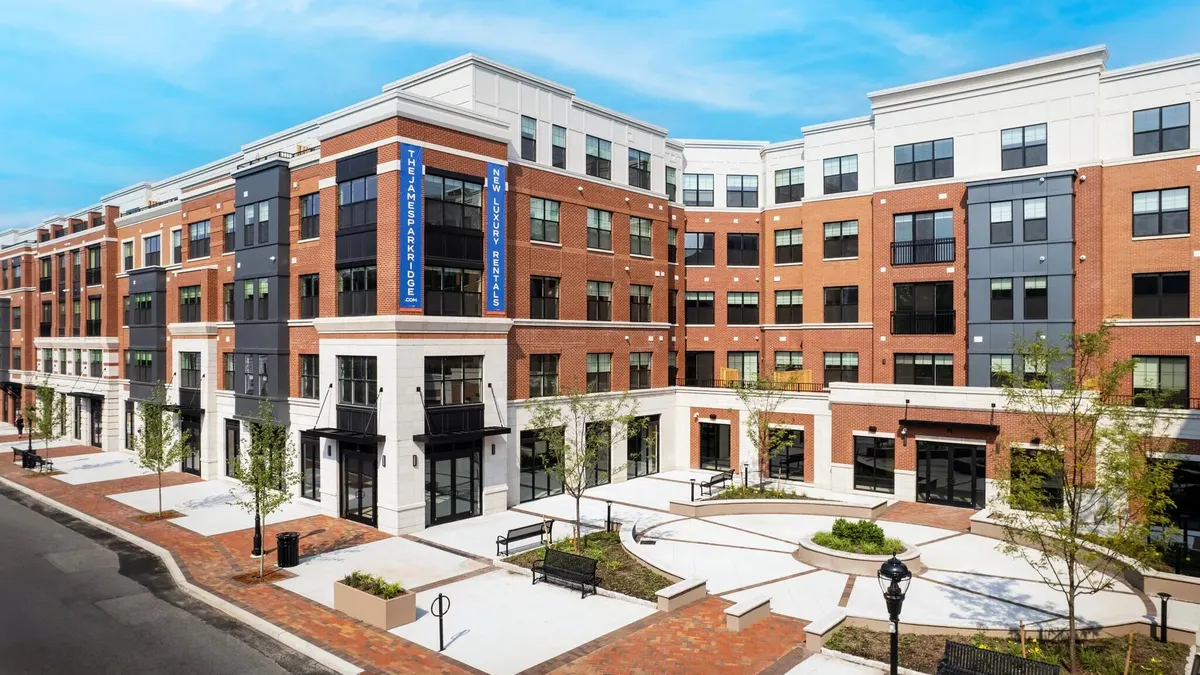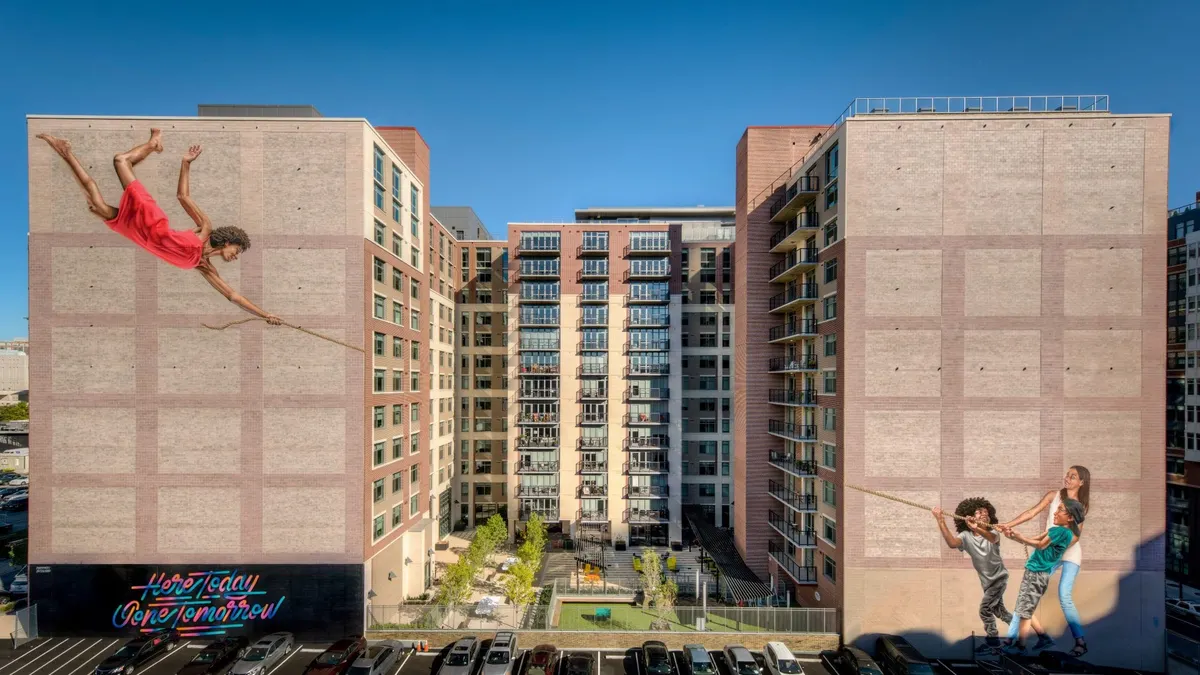Like a handful of student housing and conventional apartment companies, Athens, Georgia-based student housing developer, owner and operator Landmark Properties was working to ramp up its presence in the build-to-rent sector before the Federal Reserve began hiking interest rates in 2022.
Though issues in the capital markets prompted the company to delay those plans, the two BTR projects it did open showed that there were operational similarities between single-family rentals and student housing.
“To have the opportunity to really fine-tune the tools from student housing we wanted to use in BTR on these first two deals is frankly probably going to be a competitive advantage long-term,” Jonathan Bove, an executive vice president at Landmark, told Multifamily Dive.
When the COVID-19 pandemic hit, many operators shifted to virtual or fully online leasing. Many student managers had already deployed these technologies. Now, as Landmark continues its expansion into single-family, where virtual leasing is prevalent, Bove thinks his company will have a shorter learning curve.
“Student housing has long benefited from being fairly cutting-edge because our target demographic expects us to be pretty cutting-edge, technologically speaking,” Bove said. “And that means that we can bring those technologies to market faster in build-to-rent than perhaps some of our competitors coming from the multifamily space.”
Even though Landmark is building a BTR portfolio, student housing remains a major focus. It recently wrapped the fall move-in season with the delivery of 10 new properties totaling 8,195 beds.
Here, Bove talks with Multifamily Dive about the resilience of the student market, management intensity in the sector and the rise of centralization.
This interview has been edited for brevity and clarity.
MULTIFAMILY DIVE: How does management intensity vary in student housing versus traditional multifamily?
JONATHAN BOVE: Students already assume a higher level of service than a generic multifamily apartment resident. A typical multifamily property that has 300 units, that's 300 leases and 300 clients.
At the same asset for students, I have three-and-a-half bedrooms per front door. Each of them is individually leased, and every single one of those tenants, or almost all of them, has a parental guarantor. So I'm looking at somewhere on the order of 2,000 clients, as opposed to 300.
Does that make centralization harder?
The level of customer service doesn't go away just because we start to centralize our platform. I do think that certain repetitive tasks — lease administration and delinquency follow-up — are likely to get automated and likely to get centralized and likely to get overseen by a corporate team that handles exceptions to the repetitive automation. But I also think that if you were to jump five, 10 or 15 years from now, we're going to continue to have a more customer service-heavy focus than other parts of the industry by nature of our clientele.
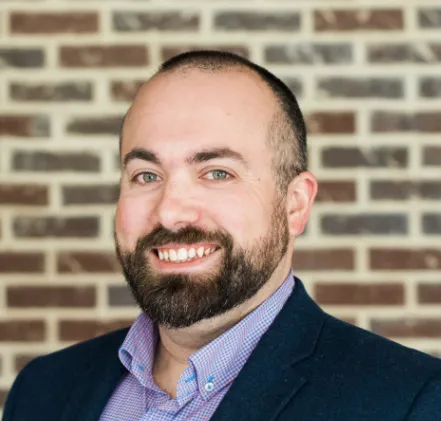
It will be really interesting to see what systems work well for us that maybe don't translate to multifamily and what systems work well for multifamily that also work well for us. Maybe it's learning things from senior housing where the same child-parent dynamics are in play. They're just in reverse.
Are all of your communities leasing for the 2024-2025 school year?
It varies greatly from market to market. Almost all of our communities have started pre-leasing for next fall. The exception to that rule is a couple of West Coast universities that are only like a week or two into school at this point, as we sit here today on the third of October. The vast majority of our communities have been accepting renewals for several weeks and have launched pre-leasing. In some markets, that means we're already 40%, 50% or more pre-leased.
There are a handful of markets that are incredibly early. The university has intense demand or maybe there's just a history in that market of students locking in their leasing particularly early. The simplest example is Knoxville and the University of Tennessee. There is a huge incoming freshman class, continued enrollment growth and a ton of demand in the market. There is plenty of new supply in the pipeline, but not a lot of supply currently there.
There are other markets where more leasing traditionally happens later in the year and they'll have a longer lease-up period. In some cases, there are markets where there are large international student populations, and we may actually expect to see a pretty big chunk of demand in the summer even though we prefer to be leased up prior to that.
How has the student housing sector recovered from the pandemic?
We continue to be a pretty resilient sector. Because of the difference in our cycle, the way we lease annually, we're frankly still realizing a lot of rental rate growth that I think multifamily has probably already captured. In the prior cycle, we had historically high occupancy across our portfolio and a pretty significant rate of growth.
This year, that rate growth bumped up into double-digit effective rate growth. While we still had strong, 95%-plus occupancy, it wasn't quite as record-setting as our prior cycles. So that being said, I think we've got a number of markets where we're off to a strong start. There are certainly some markets that are pretty saturated, but that happens every year. It's just a matter of which market it is in a given year.
Do you see growth moderating in the next year?
Overall, I think the industry is setting more conservative rate growth targets this year. I do think that it's a little bit of getting back to pre-pandemic normal in terms of most markets’ leasing velocity and most markets’ rate growth expectations.
Click here to sign up to receive multifamily and apartment news like this article in your inbox every weekday.



